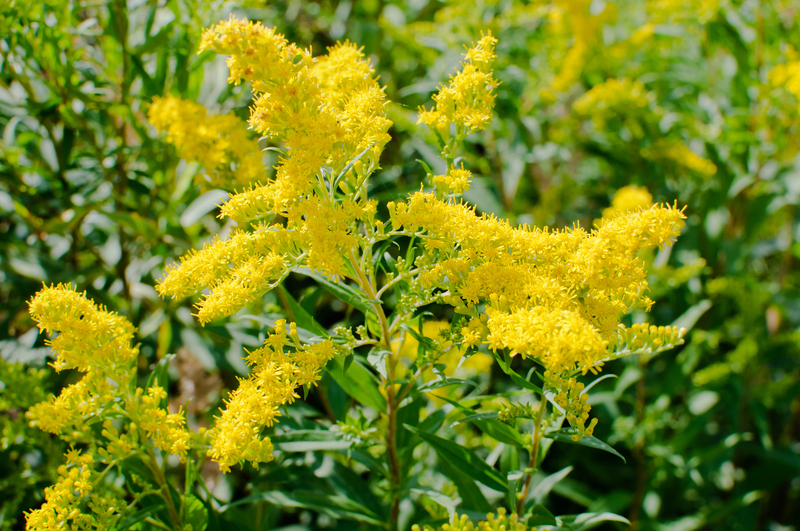Effective Invasive Weed Management Techniques
Posted on 29/03/2025
Invasive weeds present a significant challenge to agriculture, natural ecosystems, and urban landscapes. As these aggressive species spread, they displace native plants, disrupt ecosystems, and pose economic burdens. Managing invasive weeds effectively requires a comprehensive understanding of their biology, ecology, and the most appropriate control methods. This article discusses a range of effective invasive weed management techniques, highlighting principles and practices that help mitigate their detrimental impacts.
Understanding Invasive Weeds
Invasive weeds are species that have been introduced, either intentionally or unintentionally, to a new habitat where they establish, proliferate, and spread in ways that damage the environment, economy, or human health. Unlike native plant species that coexist within an ecological balance, invasive weeds often lack natural predators or control mechanisms in new environments, allowing them to outcompete endemic flora.

Principles of Effective Weed Management
To manage invasive weeds effectively, it's crucial to adhere to certain principles that guide action plans and strategies:
1. Prevention
Preventing the introduction and establishment of invasive species is the most cost-effective and environmentally benign approach. This can be achieved through stringent quarantine measures, public education programs, and early detection systems to identify and eliminate potential invasive species before they become problematic.
2. Early Detection and Rapid Response (EDRR)
Early detection and rapid response involve monitoring ecosystems for new weed introductions and taking swift action to eradicate them before they become well-established. EDRR minimizes the long-term cost and effort required for weed management by addressing the problem at its inception.
3. Integrated Weed Management (IWM)
Integrated Weed Management combines multiple control methods to achieve long-term, sustainable management of invasive weeds. IWM involves the use of mechanical, chemical, biological, and cultural control strategies tailored to specific weeds and ecosystems.
4. Restoration of Affected Area
Once invasive weeds are controlled, restoring native vegetation is essential to prevent re-invasion. Healthy, resilient ecosystems are more capable of suppressing invasive species and supporting biodiversity.
Mechanical Control Methods
Mechanical control methods involve the physical removal or destruction of invasive weeds. These methods are labor-intensive but can be effective for small infestations and when used in combination with other techniques:
1. Hand Pulling
Hand pulling is a direct method suitable for small, isolated infestations. It requires manual removal of the entire plant, including the roots, to prevent regrowth. This method is often used for herbaceous weeds and young plants.
2. Mowing
Mowing is effective for managing weeds that reproduce by seed. Regular mowing reduces the number of seeds produced and can weaken perennial weeds over time. However, mowing must be carefully timed to avoid spreading seeds.
3. Grazing
Livestock, such as goats and sheep, can be used to graze on invasive weeds. This method is particularly useful in large, inaccessible areas. Properly managed grazing can reduce weed biomass and impede their spread.
Chemical Control Methods
Chemical control involves the use of herbicides to kill or inhibit weed growth. When used responsibly, herbicides can be an efficient and targeted approach to invasive weed management:
1. Selective Herbicides
Selective herbicides target specific types of plants while leaving others unharmed. They are used to control broadleaf weeds in grasslands or grasses in broadleaf crops. Selecting the appropriate herbicide is critical to minimize damage to non-target species.
2. Non-Selective Herbicides
Non-selective herbicides kill all plant types they contact. These are used for total vegetation control in areas like industrial sites or along highways. Non-selective herbicides must be applied carefully to avoid unintended damage to desirable plants.
3. Timing and Application
Effective chemical control depends on correct timing and application. Herbicides should be applied at a weed's most vulnerable growth stage and under favorable weather conditions to maximize effectiveness and reduce off-target effects.
Biological Control Methods
Biological control uses natural predators, pathogens, or competitors to suppress invasive weed populations. This method is environmentally friendly and can provide sustainable, long-term control:
1. Insect Biological Control Agents
Insects, such as beetles and moths, that feed specifically on invasive weeds can significantly reduce their populations. These agents must be carefully selected and tested to ensure they do not harm non-target species.
2. Pathogens
Pathogens, including fungi, bacteria, and viruses, can be effective in managing invasive weeds. Introducing a pathogen that specifically infects a weed can lead to its decline without affecting other plants.
3. Competitive Plants
Planting native or non-invasive species that can outcompete invasive weeds for resources is a proactive control strategy. These competitive plants provide ground cover and reduce the space available for weeds to establish.
Cultural Control Methods
Cultural control techniques involve modifying farming practices or other land-use methods to suppress weed growth. These strategies focus on creating conditions unfavorable for weeds:
1. Crop Rotation
Regularly changing the types of crops grown in an area can break the life cycle of weeds and reduce their seed bank in the soil. Rotating crops with different sowing and harvest times limits weed establishment.
2. Mulching
Applying organic or synthetic mulch suppresses weeds by blocking sunlight and preventing seed germination. Mulch also improves soil health, benefiting desirable plants.
3. Cover Cropping
Cover crops are planted during off-season periods to cover the soil and outcompete weeds. These crops provide a living mulch, reducing weed growth and improving soil fertility when incorporated back into the soil.

Integrated Weed Management (IWM)
Rather than relying on a single control method, Integrated Weed Management combines several complementary techniques to manage invasive weeds effectively. IWM involves continuous monitoring, adapting strategies to changing conditions, and integrating mechanical, chemical, biological, and cultural methods. The goal is to develop a comprehensive management plan that reduces weed populations to manageable levels while promoting ecological stability.
1. Monitoring and Assessment
Regular monitoring and assessment of weed populations are essential to evaluate the effectiveness of management strategies and to quickly identify new infestations. Using GPS mapping and remote sensing technology can enhance monitoring efforts.
2. Tailored Approaches
IWM approaches must be tailored to specific weed species, environmental conditions, and land-use practices. Customizing control methods to local situations ensures higher efficacy and sustainability.
3. Adaptive Management
IWM requires an adaptive management approach, where strategies are adjusted based on ongoing assessment and outcomes. Flexibility and responsiveness are key to addressing dynamic weed populations and ecological conditions.
Conclusions
Effective management of invasive weeds demands a multifaceted approach that integrates prevention, early detection, and rapid response, alongside mechanical, chemical, biological, and cultural control methods. By adhering to these principles and employing a comprehensive Integrated Weed Management strategy, it is possible to mitigate the negative impacts of invasive weeds on agriculture, natural ecosystems, and human activities. Ongoing research, public awareness, and collaboration among stakeholders are essential to advancing weed management practices and achieving long-term success in the fight against invasive weeds.





 Certified and experienced landscapers
Certified and experienced landscapers




 Get a Quote
Get a Quote